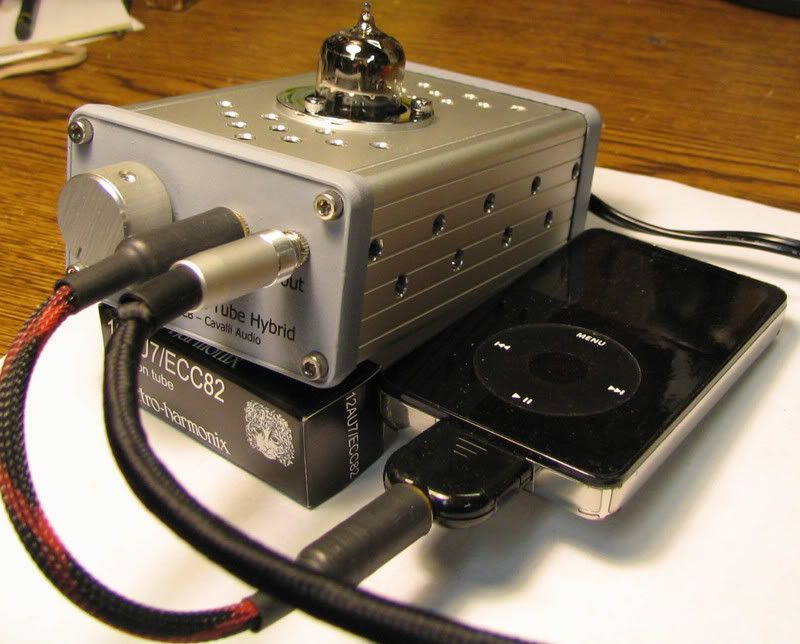- Joined
- Oct 10, 2002
- Posts
- 2,941
- Likes
- 1,422
Hello everyone. After much background work and some fair amount of prototyping cfcubed and I (with some help from forsakenrider) would like to introduce a very small hybrid amplifier.
This amp was born out of cfcubed\'s efforts to make a teeny tiny hybrid amp as discussed in this thread,
Teeny Tiny Tube Amp
cfcubed wrote to me about this idea and, as it turned out, I had been working in the background on a small hybrid that could be powered from a walwart. In this case, however, I wanted the tube to have a higher plate voltage than is available in other hybrids so I had already determined to use a SOHA II voltage multiplier.
As we discussed what the design goals were we came up with these:
1. Fit on a 75mm x 120mm board to slot into a hammond enclosure.
2. Use discrete output buffers.
3. Elminate the trimpot as used in the SOHA
4. Generate high than 40V for the tube
5. Use a buck regulator for the heater supply
6. Include AMB\'s e12
It took a while to satisfy all of these requirements, but at this point, after a POC build by cfcubed and some small prototyping by runeight, we think we have a nice little amp. I want to thank cfcubed for all of his great ideas, collaboration and time and prototyping work.
cfcubed will be filling in on some of his builds and experience and, in particular, his heater circuit design. And anywhere else that he feels like it.
I\'ll be posting each section of the amp with an explanation in follow up posts. We have a board design which is at the fab right now waiting to make a small prototype run. There are enough boards for others to build a proto if you have an interest. Please let us know.
For now I\'m posting a 3D image of the board and a PDF of the PCB. You can print the PDF at scale to see just how much stuff is crammed onto this board and how tiny it is.
Compact Hybrid Board
Here\'s the 3D:


This amp was born out of cfcubed\'s efforts to make a teeny tiny hybrid amp as discussed in this thread,
Teeny Tiny Tube Amp
cfcubed wrote to me about this idea and, as it turned out, I had been working in the background on a small hybrid that could be powered from a walwart. In this case, however, I wanted the tube to have a higher plate voltage than is available in other hybrids so I had already determined to use a SOHA II voltage multiplier.
As we discussed what the design goals were we came up with these:
1. Fit on a 75mm x 120mm board to slot into a hammond enclosure.
2. Use discrete output buffers.
3. Elminate the trimpot as used in the SOHA
4. Generate high than 40V for the tube
5. Use a buck regulator for the heater supply
6. Include AMB\'s e12
It took a while to satisfy all of these requirements, but at this point, after a POC build by cfcubed and some small prototyping by runeight, we think we have a nice little amp. I want to thank cfcubed for all of his great ideas, collaboration and time and prototyping work.
cfcubed will be filling in on some of his builds and experience and, in particular, his heater circuit design. And anywhere else that he feels like it.
I\'ll be posting each section of the amp with an explanation in follow up posts. We have a board design which is at the fab right now waiting to make a small prototype run. There are enough boards for others to build a proto if you have an interest. Please let us know.
For now I\'m posting a 3D image of the board and a PDF of the PCB. You can print the PDF at scale to see just how much stuff is crammed onto this board and how tiny it is.
Compact Hybrid Board
Here\'s the 3D:































